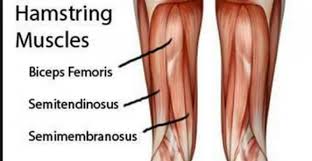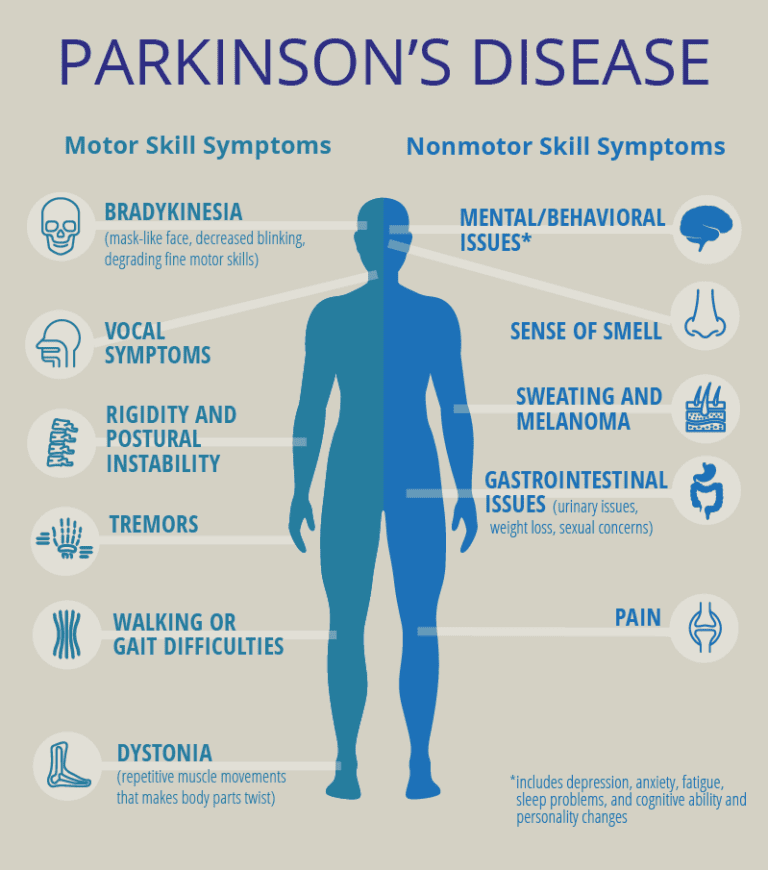Resistance Training
Table of Contents
Introduction
- Resistance training, also referred to as strength training or weight training, is the application of force to a muscle contraction.
- To increase skeletal muscle growth, anaerobic endurance, and strength.
- Your muscles will contract during strength training, commonly referred to as resistance training, as an external resistance.
- Your body weight, weight machines, medicine balls, resistance bands, or dumbbells can all act as external resistance.
- Muscle strength is increased by resistance exercise, which involves working your muscles against a weight or force.
- Using free weights, weight machines, resistance bands, and your own body weight are some of the various resistance training methods. For the best results, a novice should exercise two or three times a week.
- Resistance training is crucial for developing certain strengths in all sports categories, despite being frequently linked to power and strength sports.
- Resistance training can improve an athlete’s maximum strength, explosive power, and muscular endurance when done properly (Fisheret al., 2009).
- These elements must be present in some combination for every sport.
- Achieving these adjustments that improve performance is generally attributed to nutrition.
- Training regimens must be customized for each activity, just as caution.
- There is no doubt the benefits of strength training for young athletes; nonetheless, the efficacy and safety of resistance training are frequently difficult as accidents can harm growth plates and soft tissue, two essential components in the physical growth of young athletes.
- By subjecting muscles to resistance against a weight or force, strength training, commonly referred to as resistance exercise, builds muscular strength. Anaerobic exercise is seen as including resistance training.
- Using your own body weight, free weights, weight machines, resistance bands, and plyometrics are some of the several ways to strengthen yourself.
- For the best results, a novice should exercise two or three times a week.
- Before beginning a new fitness program, people should undergo a pre-participation health exam and speak with specialists, such as a doctor, exercise physiologist, physiotherapist, or licensed exercise professional.
- The best programs will provide the best outcomes when they have clear objectives, beginning points, and progressions.
How to Do Resistance Training Activities Function?
- Resistance training functions by creating tiny rips or tears in the muscle fibers, which the body swiftly repairs to support the muscles’ growth and regeneration.
- The breakdown of muscle fibers is referred to as “catabolism,” whereas the growth and regeneration of new muscle tissue is referred to as “anabolism.”
- Anabolic means to grow, and that’s precisely what occurs when resistance training breaks down muscle fibers.
- In actuality, the body has to undergo some breakdown, or catabolism, before it can regenerate from various biological processes of development.
- For example, in order for calcium and other growth factors to mend and strengthen bones, the bones themselves must first be broken down.
- After a resistance-training session, muscles get an influx of growth hormone, insulin-like growth factor, protein, and other nutrients that aid in muscle repair and increase muscular strength.
- It’s important to remember that your muscles develop and repair while you’re not exercising, which is why you need to give yourself time to recuperate between sessions.
Why Resistance Training?
- Resistance training has many established health advantages, and new studies are showing how crucial it is for Americans to exercise regularly.
- Humans’ muscles were put to the test long ago in hunter-gatherer communities when they built shelter, went hunting, farmed, and performed all the other physical tasks required to survive.
- But with today’s labor-saving technology, we have designed idleness into our lives to the point that our muscles almost ever need to be worked very hard.
- We don’t go through airports, climb stairs, or even rake leaves or trim grass by hand people movers handle all of that for us!
- We also don’t wash our clothes, clean our dishes, or even push a vacuum by hand (have you seen the robotic vacuum?)…we’re spending less time outside raking leaves, playing baseball, soccer, touch football, hiking, or engaging in any other leisure activity and more time in front of our computers and televisions.
- According to research, being sedentary is the second most common avoidable cause of mortality in the US, and it is actually killing us.
Why Engage in Resistance Training?
- It increases muscular tone and strength.
- After the age of 30, humans lose five pounds of muscle every ten years.
- As people age, their muscle fiber count decreases.
- We can lose about 25% of our body’s type 2 muscular fibers, or our strength fibers, between the ages of 30 and 70.
- Resistance training increases muscular growth and strength, which can delay or even reverse the aging process.
- It is demonstrated to increase bone.
- Resistance training may help older people strengthen their bones, according to a study on the disease osteoporosis, which is characterized by rapid loss of bone calcium and may be extremely debilitating for both men and women.
- Resistance training appears to help decrease blood pressure that is somewhat elevated.
- Elderly people who are stronger may fall less frequently.
- Increased metabolic rate from resistance training is beneficial for preserving body weight.
- There’s always time to get started. Strength grew by an astounding 113% in research including senior men and women (mean age 87) who lifted weights three times a week for ten weeks!
- The senior participants’ increased strength allowed them to climb 28% more stairs, walk 12% quicker than before the trial, and even see an increase in their thigh muscles of more than 2.5 percent.
How Much Should I Exercise in Resistance?
- Resistance training should be progressive (e.g., use the progressive overload principle; see below for an explanation), customized, and stimulate all of the major muscle groups (chest, back, shoulders, arms, abs, and legs).
- The American College of Sports Medicine says this. For novices, they advise doing one set of eight to ten exercises for the main muscle groups, two to three days a week, for eight to twelve repetitions (reps) until exhaustion (multiple-set regimens may yield higher benefits if time allows).
- They recommend that 10-15 repetitions would be more suitable for elderly and more fragile individuals (about 50–60 years of age and older).
What Is the Progressive Overload Principle?
- One may argue that the first athlete to apply the concept of progressive overload was the Greek wrestler, strongman, and athlete Milo of Croton.
- It’s a legend that for years leading up to the Olympic start date, Milo would practice carrying a newborn calf on his back every day.
- By the time the Olympics came around, the calf had grown to be a full-sized cow, and Milo was still doing it! Essentially, Milo became stronger in order to compensate for the animal’s increasing weight.
- It’s an example of increasing overload. In order to build strength and tone with this strategy, you must lift weights heavy enough to cause muscle strain on the tenth or twelfth repetition.
- Once that becomes easy, you raise the weight and continue lifting that new weight until you can do 10-12 repetitions of the exercise. Once you reach 10 or 12 repetitions, you can raise the weight. Because the weight is heavier as you add additional weight, you usually do fewer repetitions at first, but as your muscles get stronger, you can lift more weight.
- The approach that produces the most improvements in strength is generally acknowledged to be the progressive overload concept.
Should I Use Machines or Free Weights for Lifting?
- If you have access, the straightforward response is both.
- Bodybuilders utilize both, and it is evident that it benefits them.
- Below is a summary to help you understand the benefits and drawbacks of each; in addition, I’ve added information about using your own body weight and exercise tubing as alternatives to free weights and machines.
Free Weights (Dumbbells and Barbells)
Benefits:
- A wide range of workouts are available for every muscle area.
- They let you choose the type of exercise that best suits your anatomy, unlike machines that limit mobility.
- For instance, you can automatically adapt to the constraint if the range of motion in your shoulder joint is restricted by using a
- dumbbell.
- Because it takes the ability to manipulate and manage the dumbbells, free weights aid in the development of coordination.
- For instance, you have to regulate the action so that the dumbbells travel straight up and not outward when performing dumbbell presses.
- You need to be able to stabilize yourself when performing a squat in order to avoid falling.
- It’s possible that you’ll engage muscles other than the targeted one.
- Returning to dumbbell presses, you work not just your triceps, anterior deltoid, and pectorals, but also your shoulder and back muscles to help you maintain your body’s stability and coordination throughout the exercise.
- Similarly, when performing front raises while standing, your body will instinctively use the muscles in your back and abdomen to stabilize itself.
Negative aspects:
- Accidents involving fallen bars or dumbbells are possible.
- Performing a bar bench press might result in fatalities or major injuries.
- For this reason, whenever you lift free weights, always utilize a spotter.
- You’ll need room to keep all the dumbbells if you’re powerful and need a lot of weight.
- If you want to use fewer dumbbells, you can get away with using plates that load on bars but changing weight plates mid-workout is a hassle and not very enjoyable.
Machines
Benefits
- They are easy to operate.
- All you need to do is insert the pin into the weight stack and get started.
- Simply remove the pin and replace it in the next weight if extra weight is required.
- As long as you don’t choose a weight that is too heavy and put undue pressure on yourself, they are generally safe.
- It won’t fall on you even if you drop one.
- There isn’t much coordination needed for them.
- If you only push or pull on the handles or bar, you can lift weights.
Negative aspects:
- They require a lot of space.
- They cost a lot of money.
- You need a large number of equipment to cover all the muscle groups because most machines can only train a single muscle group.
- The cable pulley devices are an exception.
- They are safe and incredibly adaptable you may use them for a variety of workouts.
- Over time, if your body is not properly matched to the action of the machine, repeated use might lead to joint injuries.
- For instance, the range of the biceps and triceps machines is restricted, and using them might lead to issues with the elbow and shoulder joints.
- I advise you to go through the gym and identify the free weights and equipment that are most effective for you.
- For instance, you could find that bent-over dumbbell rows using the machine are preferable to cable rows.
The following is a list of additional exercises that may be performed with free weights or machines (labeled as machine/free weight).
- pull-downs/two-arm bent-over rows
- cable upright rows/free weight upright rows
- seated chest press/dumbbell or bar press
- cable crossovers/flyes
- triceps press-downs/kickbacks
- leg press/squat
On this page:
- Examples of resistance training
- Health benefits of resistance training
- Basic principles of resistance training
- Resistance training for beginners
- Starting resistance training
- Warming up before resistance training
- Advanced resistance training
- Repetitive maximum (RM) and resistance training
- Using MVC to achieve goals for advanced resistance training
- Muscle recovery during advanced resistance training
- Gaining strength from advanced resistance training
- Where to get help
Resistance to muscular contraction is used in resistance training, also known as strength training or training, to increase skeletal muscle growth, anaerobic endurance, and strength.
The foundation of resistance training is the idea that the body’s muscles will exert themselves to overcome a resistance force when necessary.
Your muscles gain strength via regular, consistent resistance exercise.
Strength training enhances bone density, and muscular, tendon, and ligament strength; it also improves joint function; aerobic exercise improves heart and lung fitness; and balance and flexibility exercises are all part of a well-rounded fitness program.
To sustain success, switch up your progressive resistance training regimen every six to eight weeks.
The following variables may have an effect on your results:
- Sets.
- Repetitions.
- Exercises undertaken.
- Intensity (weights used).
- Frequency of sessions.
- Rest between sets.
- You may sustain the strength gains you get in resistance training by varying the number of repetitions and sets, the exercises you perform, and the weights you use.
Examples of resistance training
- Whether you work out at the gym or at home, there are several strategies to build muscle.
- Various forms of resistance training consist of.
- Classic strength training equipment like dumbbells, barbells, and kettlebells are examples of free weights.
- Sandbags or medicine balls that have been weighted.
- Weight machines are machines with movable seats and handles that are connected to hydraulics or weights.
- Resistance bands provide resistance when stretched; they resemble large rubber bands.
- They are adaptable to most workouts and portable.
- The resistance is constant throughout a movement thanks to the bands.
- Suspension equipment is a training gear that allows users to perform a variety of workouts by using their own body weight and gravity.
- You can perform chin-ups, push-ups, and squats using your own body weight.
- It’s handy to use your own body weight, particularly when traveling or at work.
Health benefits of resistance training
- Resistance training has a number of benefits for mental and physical well-being, including:
- Enhanced muscular tone and strength to prevent damage to your joints.
- Preserving your balance and flexibility will help you stay independent as you get older.
- Weight control and an elevated muscle-to-fat ratio: an increase in muscle mass increases resting-energy expenditure (KJ).
- May lessen or stop an elderly person’s cognitive deterioration.
- Increased stamina: You won’t wear out as quickly as you gain strength.
- Chronic illness prevention or management, including diabetes, heart disease, rheumatoid arthritis, back pain, depression, and obesity.
- Pain management.
- Enhanced balance and mobility.
- Better alignment of the posture.
- Reduced chance of harm.
- a lower chance of osteoporosis and stronger, denser bones.
- Enhanced well-being — engaging in resistance training may help you feel more confident, better about your body, and happier.
- Better slumber and prevention of insomnia.
- Elevated self-worth.
- Improved efficiency in routine activities.
Basic principles of resistance training
- There are many components to resistance training. Basic principles include:
- Program: The several exercise kinds that make up your total fitness program include aerobic, flexibility, strength, and balance training.
- Weight: During your strength training session, various weights or other forms of resistance such as a 3 kg hand weight or fixed weight, body weight, or rubber band will be utilized for different exercises.
- Exercise is a specific movement, like a calf raise, that is intended to build the strength of a certain muscle or set of muscles.
- Reps, also known as repetitions, are the total number of times you do each exercise in a set without interruption.
- A set is a collection of repetitions carried out without stopping.
- For instance, two sets of 15 reps of squats would need you to execute 15 squats, rest your muscles, and then perform another 15 squats.
- Rest: You must take a break in between sets.
- The length of a rest interval varies with the level of exertion.
- Variety: Changing up your training regimen, such as by adding new exercises on a regular basis, puts your muscles to the test and makes them stronger and more adaptable.
- Progressive overload theory states that in order to keep getting stronger, you should work out until it becomes difficult for you to perform the exercise again.
- The goal is to maintain proper technique while using a suitable weight or resisting force that will test you.
- Additionally, you may ensure that you advance and get better by making frequent modifications to the training factors, such as frequency, length, number of exercises for each muscle group, sets, and repetitions.
- Recovery: Following an exercise, muscles require time to rebuild and adjust.
- Resting a muscle group for up to 48 hours before training it again is a decent general rule of thumb.
Resistance training for beginners
- The purpose of pre-exercise screening is to find individuals with health issues that may increase their chance of developing a health problem during physical activity.
- It serves as a safety net or filter to determine whether exercising has more potential advantages for you than disadvantages.
- Get a copy of AUSactive’s adult pre-exercise screening tool, print it off, and talk to your physician, allied health provider, or fitness expert about it.
- Strengthening your body with exercises is advised by the Australian Physical Activity and Sedentary Behaviour Guidelines to be done at least twice a week.
- All of your body’s major muscular groups (legs, hips, back, chest, core, shoulders, etc.) should be worked out by these exercises.
Starting resistance training
- To lower the chance of injury, it is crucial to focus on form and safety.
- You may create a safe and successful program with the assistance of an AUSactive licensed expert.
- To begin with, a standard strength training regimen for beginners includes.
- Eight to ten exercises that target the body’s primary muscular groups should be done twice or three times a week.
- Start with one set of each exercise, no more than twice a week, and as low as eight repetitions (reps) each set.
- Your goal is to progressively build to two or three sets, or eight to twelve repetitions, each exercise, every other or third day.
- If an exercise is something you can perform 12 repetitions of with ease, you should consider going harder.
Warming up before resistance training
- Before beginning any strength training workouts, warm up your body.
- Begin with mild aerobic activities (such as jogging, cycling, or rowing) for around five minutes, followed by a few vigorous stretches.
- Throughout the whole range of motion, slow, deliberate motions are used in dynamic stretching.
Advanced resistance training
- To maximize the benefits of resistance training, gradually raise the level of your workouts in accordance with your expertise and training goals.
- This might entail adding weight or adjusting the contraction’s length(the amount of time you sustain retaining the weight while cutting down on recovery time or intensifying exercise.
- You may gradually increase the intensity of your workout after four to six weeks of consistent resistance training.
- when your muscles adjust.
- According to research, receiving expert supervision and guidance might help you get better outcomes since it will guarantee that you use the right approach and abide by safety guidelines.
- Before continuing with your program, get in touch with a medical practitioner if you feel any pain or discomfort.
Repetitive maximum (RM) and resistance training
- The ideal method for building muscle mass is for the muscle to contract as much as possible at any given moment-maximum Voluntary Contraction (MVC).
- The word “XRM” in weight training refers to MVC, where “RM” is the maximum number of repetitions that
- can be finished with a certain weight or resistance.
- X is the maximum number of lifts a given weight can withstand before the muscles tire.
- What kind of gains the muscles will produce is determined by the RM range.
- The ideal range for strengthening muscle strength is 2–6 RM for more experienced lifters and 8–12 RM for beginners.
- The term 7RM, for instance, indicates that a person can lift a weight, say 50 kg, seven times before their muscles get too tired to proceed.
- Lower RM is associated with higher weights; an individual may be able to lift a 65 kg weight, but not more than seven periods.
- Higher RMs are usually achieved with lower weights; for instance, an individual might lift a 35 kg weight around 12 times before developing muscle weariness sets in.
- The MVC principles might assist you in getting the most out of your exercise.
- As a general guideline, only raise the after you are able to comfortably perform two repetitions over your maximum, increase the weight by two to ten percent.
- The formula 7RM, for instance, indicates that a person can lift a weight, say 50 kg, seven times before their muscles fatigue.
Using MVC to achieve goals for advanced resistance training
- The fundamentals of strength training are adjusting the number of reps, sets, speed, exercises, and force to achieve the desired change in strength, endurance, size, or form, and overloading a particular set of muscles.
- The exact mix of repetitions, sets, exercises, resistance, and force will dictate the kind of muscular growth you attain.
- Recommendations based on the RM range consist of Muscle power: 1–5 RM, executed with force every set.
- Strength: 1–6 RM controlled repetitions each set.
- Hypertrophy of the muscles: 6–12 repetition maximums each set, under control.
- Muscle endurance: 12–15 RM or more, carefully calibrated every set.
Muscle recovery during advanced resistance training:
- After an exercise, muscle needs time to develop and mend.
- Your muscles won’t become larger if you don’t give them adequate time to heal or more powerful.
- Resting the affected muscle group for at least 48 hours is a decent general rule of thumb.
- After you’ve gained enough resistance training expertise, and with the guidance of a certified exercise or allied health practitioner, You should think about implementing a split program.
- For instance, you may exercise your lower body on Fridays and Mondays and your upper body on those days on Sundays and
- Wednesdays.
Gaining strength from advanced resistance training:
- A quick spike in strength is usually experienced by novices, who then plateau or lose ground on their strength gains. Following that,
- gains in muscular mass and strength are not easily attained.
- The majority of your first strength gain, when you begin resistance training, is caused by a process known as neural adaptation.
- This indicates that the behavior of the muscles is altered by the nerves supplying them.
- It is believed that the nerves fire more often, which prompts enhanced muscle contraction) and the recruitment of additional motor units to carry out the contraction (a motor unit is a nerve cell and its corresponding muscle fibers).
- This indicates that you’ve reached a plateau when you get stronger but your muscles stay the same size.
- Don’t give up if you don’t see results right away since muscle cells will eventually become larger (hypertrophy) as a result of consistent resistance exercise.
- The plateau—in fact, it’s a positive indicator that more muscular growth is on the way.
- Numerous methods might assist you in shortening the time of plateau.
- You may overcome a plateau in your training by switching things up.
- According to the notion of variety, you may encourage the development and strength of your muscles by introducing a variety of unexpected pressures.
- When pressed, the muscles will become bigger and stronger.
- Follow your personal trainer or gym instructor’s instructions, but some ideas are as follows.
- Increase the number of repetitions.
- Spend an extra 10 or 15 minutes working out.
- Exercise more frequently, but remember that every muscle needs at least 48 hours to recuperate.
- After you’ve gained more if you’re seasoned, you could want to think about dividing up your body into various days of the week.
- For instance, your shoulders, chest, and first session’s triceps, second session’s back, third session’s biceps and abdominal muscles, and fourth session’s legs.
- Change up your workouts; for instance, concentrate on activities that use many muscle groups and are functional or particular to
- nature, which implies that they have to do with day-to-day tasks or athletic demands.
- Raise the weight by 5% to 10% approximately.
- Engage in cross-training exercises like jogging or swimming.
Where to get help
- Live Lighter
- Your GP
- Eat for Health
- Heart Foundation – Healthy Eating
Conclusion
Muscle strength is improved by resistance exercise, which involves working your muscles against a weight or force. Using free weights, weight machines, resistance bands, and your own body weight are some of the various resistance training methods. For the best results, a novice should exercise two or three times a week.
FAQ
Examples of resistance training
Various forms of resistance training consist of Free weights, which are traditional strength training equipment including dumbbells, barbells, and kettlebells.
Sandbags or medicine balls: these are weighted bags or balls.
The Squat might be considered the “Mac-daddy” of workouts the best of all resistance training exercises. It works every major muscle in the lower body.
When executed properly, it engages a variety of upper body muscles to support the spine during loads on the leg, thighs, and hips.
Lay with the shoulders and/or upper back supported.
Does Yoga Count as Exercise?
Yoga positions like the handstand and the mountain pose are examples of body-weight training exercises that employ your body weight as resistance.
According to Laskowski, there are some stances and positions that will stress a muscle and build its strength merely by using your body weight.
Push-ups are an ubiquitous resistance training exercise. Although the upper body action is somewhat comparable to that of the bench press, when using comparable relative loads, there are noticeable variations in the repetition counts.
One can consider walking to be a weight-bearing exercise in and of itself.
Because your body must maintain its own weight, it helps to develop muscular endurance even if it isn’t strength training.
References:
- Department of Health & Human Services. (n.d.). Resistance training – health benefits. Better Health Channel. https://www.betterhealth.vic.gov.au/health/healthyliving/resistance-training-health-benefits
- Strength training. (n.d.). Physiopedia. https://www.physio-pedia.com/Strength_Training
- Cde, R. W. M. (2019, October 10). Resistance training exercises: Benefits, definition & Examples. eMedicineHealth. https://www.emedicinehealth.com/strength_training/article_em.htm







